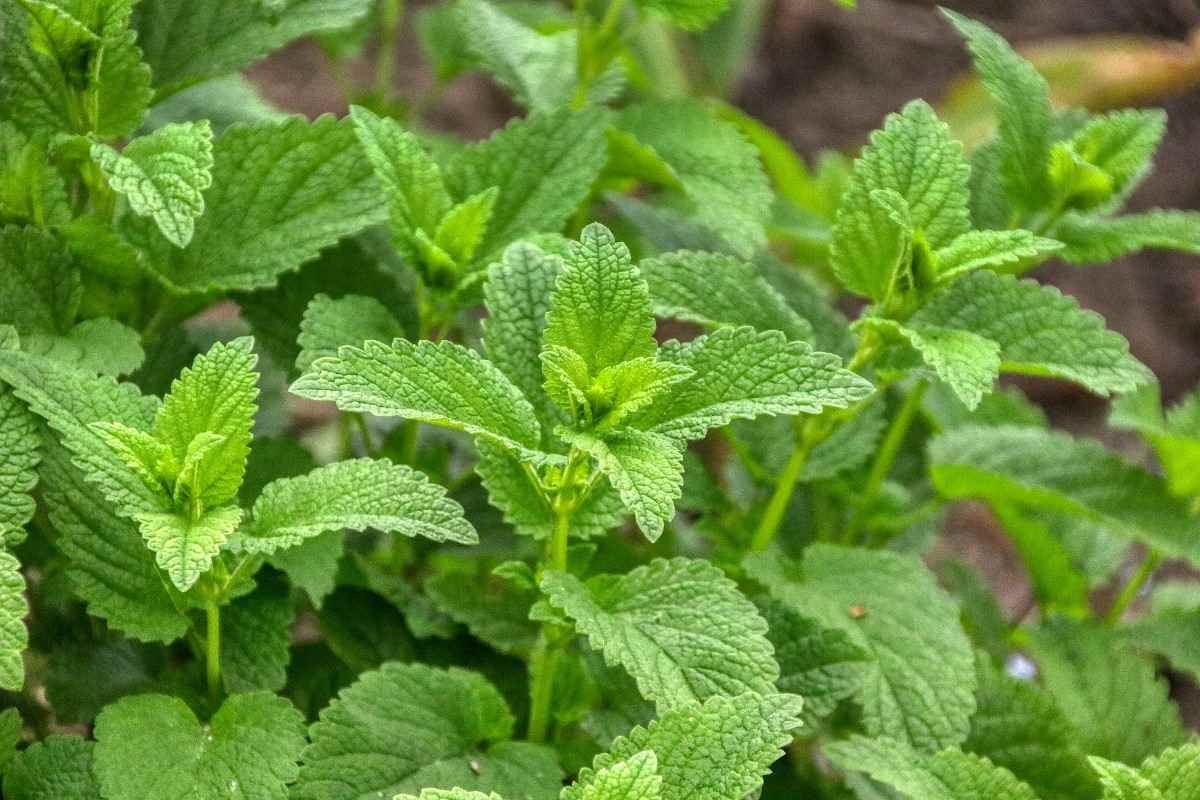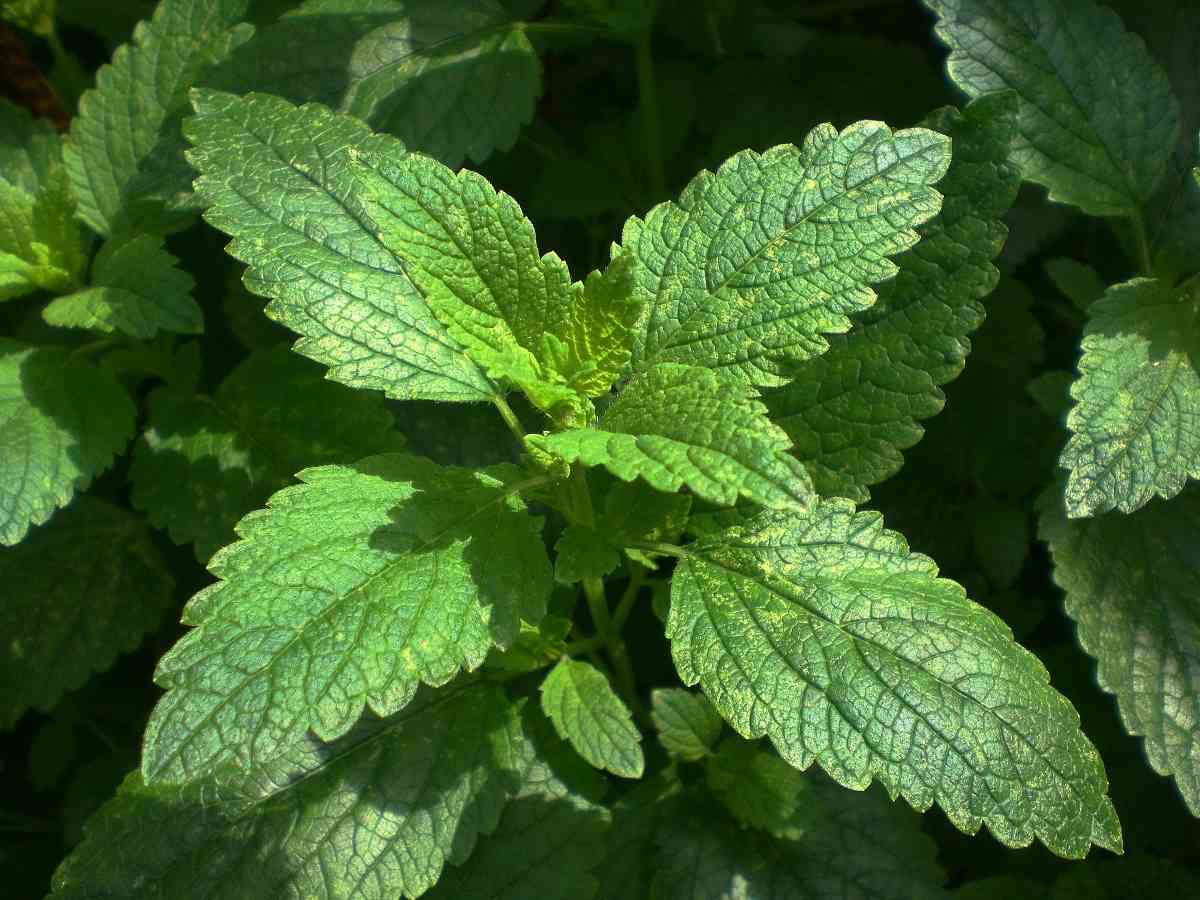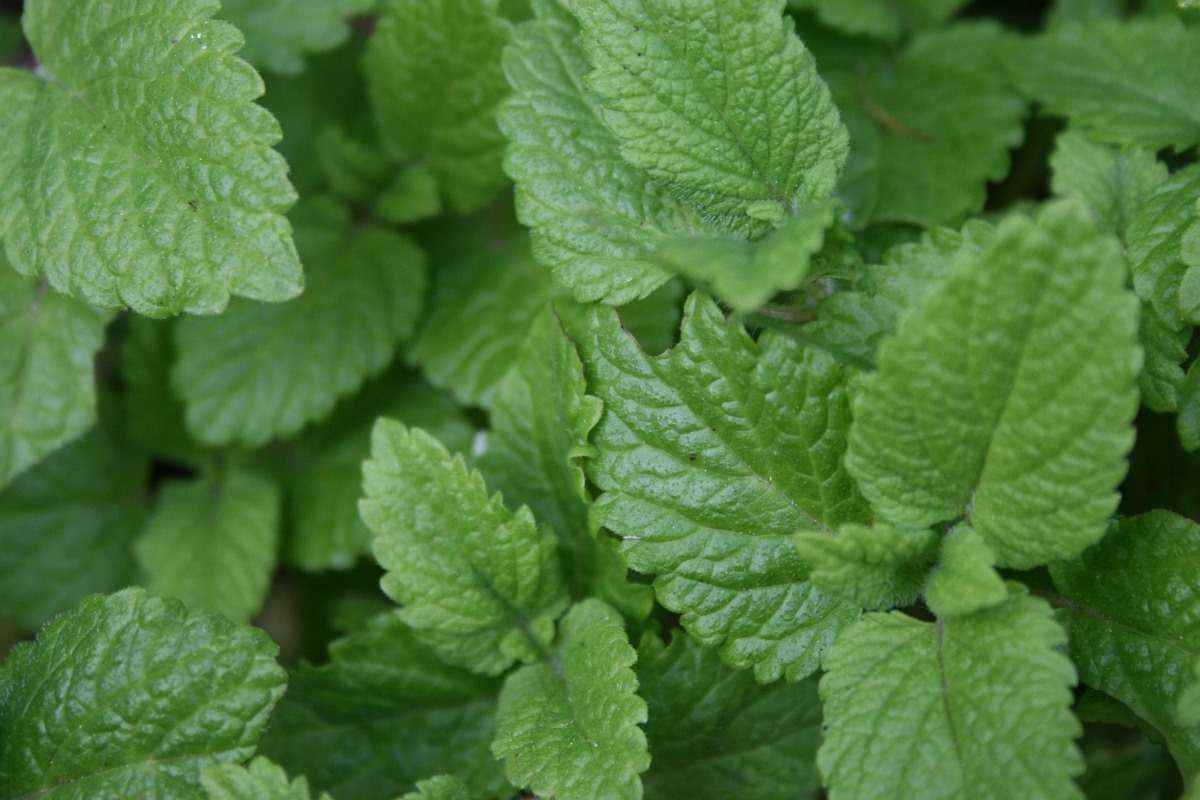Growing Lemon Balm at Home
Hello gardeners, we are back with a new topic called growing lemon balm at home. Are you interested in growing lemon balm at home? Well, and then you will need to follow this complete article. In this article, we will also cover all the requirements for growing lemon balm at home.
Introduction to Growing Lemon Balm at Home
Lemon balm as a houseplant is a marvelous idea because this attractive herb offers a good-looking lemony aroma, tasty addition to foods and drinks, and a pretty potted lemon balm plant for a sunny window ledge. Knowing which type of herb needs will allow you to grow it indoors, year-round.
A Step-By-Step Guide for Growing Lemon Balm at Home

Lemon balm also called the most common balm or mint balm is a peaceful herb is that belongs to the mint family. As its name suggested, it’s called a lemony flavor that makes it ideal to use for tea, salads, peaceful herbal infusions, and other dishes. But while you can detect, dried lemon balm at many herb shops, the fresh lemon balm variety isn’t as readily available. The good news is that lemon balm is beautiful and easy to grow so you can plant your idea and have a steady provide whenever you need it. All it requires is a sunny spot, moist soil, and a more little bit of fertilizer for healthy growth.
The lemon balm leaves of the lemon balm plant have the smell of lemon with a suggestion of mint, with leaves good look like an oversized mint no surprises since one of the lemon balm plant is a part of the mint family. Lemon balm can grow 15 to 16 inches tall and makes a nice green bunch of medium-textured leaves among the other peaceful herbs and flowers in your garden. The lemon balm plant good looks like the best when it is cut back periodically, so we are plan to use lots of fresh, flavorful leaves to brew tea flavor fruit or green salad, and season fish. Be sure to include lemon balm stems in bouquets of summer flowers.
What Is Lemon Balm?
The lemon balm plant is also called Melissa officinalis, is a member of the mint family, and is a perennial herb. It grows as a bushy, leafy herb with a pleasant lemon scent and small white flowers. If not carefully and managed, lemon balm can fastly become invasive in the garden. Often, people mistakenly think that lemon balm is forward due to its roots, like its cousin’s peppermint and spearmint, but it’s the seeds of the lemon balm plant that cause this is a perennial herb to immediately take over a garden. Removing the flowers of the lemon balm plant as soon as they develop and will make your lemon balm far less invasive.
Overview Table of the Lemon Balm Plant is Given Below
| Botanical Name | Melissa officinalis |
| Common Name | Lemon Balm |
| Plant Type | Herbaceous perennial |
| Sun Exposure | Full sun and partial shade |
| Soil Type | Well-drained |
| Soil pH | Neutral to Acidic |
| Bloom Time | Summer |
| Flower Color | White and pale yellow |
Suitable Container for Growing Lemon Balm at Home
To grow the lemon balm plants in a container, lemon balm plant seeds are transferred in a container that is at least eight inches deep and 15 to 18-inches wide. To be placed the container in a location that received at least 5 hours of the best direct sunlight a day. Though not as flavorful when it’s grown indoors, it can be also kept inside with 14-16 hours of unnatural light provided per day, if it is necessary. Container lemon balm plants may need to be separated in the fall to avoid becoming root-bound.
Suitable Soil for Growing Lemon Balm at Home
Lemon balm plants mostly prefer slightly sandy, well-drained soil. Most basic potting moist soils will work just better, but if you look for your mixture is a bit tight or stays too moist soil between watering, to mix with sand or a drier soil variety of like a cactus mix. Additionally, the pH of the soil should be neutral to acidic, with a specific level between 6.7 to 7.3 providing the best environment. To choose a container to house your lemon balm plant in, when you select a pot with ample drainage holes to minimize the risk of the peaceful herb becoming waterlogged or the deep root plants. One of them made of sand or terracotta can also be helpful, as the porous material will help to thread any added moisture from the soil.
Sunlight Requirements for Growing Lemon Balm at Home
In both inside and outside environments, the lemon balm plant loves a sunny spot. However, unlike an outside lemon balm plant which can accumulate a little bit of partial shade those planted inside need ample sunlight, at least five to six hours a day. Place your perennial herb containers near a windowsill that gets selected light completely per the day. If you observed your lemon balm plant getting a lot of severe direct rays or turning brown on its leaves, rotates it periodically to avoid burning.
Lemon balm plants are grown in the best place in a location that received full sun. However, it is partial shade is sensitive, so it can do as well as in a spot that receives some partial shade in the afternoon.
Temperature and Humidity Requirements for Growing Lemon Balm at Home
When it comes to its inside environment, the lemon balm plant is not particularly choosy. In general, it’s best to keep your peaceful herb away from any blowing air that is too cold or too hot, such as in front of an air conditioner or next to a radiator. Additionally, the lemon balm plant does not require a humid environment to survive, so you won’t have to worry about increasing the moisture levels in the air with a humidifier.
Propagating Methods for Growing Lemon Balm at Home
- Seed: Lemon balm plants should be grown from a seed that has been covered cooled or frozen for at least 7 days; once stratified germination will produce in about 14 days. Lemon balm plants will self-sow in placed location. you can also saw seeds in place in fall down for spring plants.
- Cuttings: Here root lemon balm cuttings in behind spring or easily summer; dip cut ends in a rooting hormone and plant stems in organic potting mix soil.
- Division: The root division can be planted between certain locations at any time during the growing season.
- Layering: Lemon balm will root at branches along stems when covered with moist soil; layer lemon balm plants in spring or fall.
How to Grow Lemon Balm at Home?

Lemon balm plants can be grown in full sun or partial shade. While adjustable to almost any moist soil and sun conditions, here some people are finding out that it can lose color if exposed to too much sun and that some partial shade can improve the flavor.
A suitable growing environment for this perennial herb includes moist soil, very good drainage, and protection from hot weather. It is always a very good idea to absorb some compost into the moist soil before planting.
However, becomes it has such a robust and sprawling root system, you can lemon balm plant it on a hillock to prevent erosion. A healthy grower once established this perennial herb rarely requires fertilizing or much in the way of special care.
Their likely other mints, it tends to lie down. But unlike its creeping relatives, lemon balm spreads by seed as another option via rhizomes. While it does self-seed sow quite and easily, it won’t take over the garden in quite the same way.
That said, it is a very good idea to lemon balm plant it somewhere that you are better with it sticking around for a while with an expanded footprint! Or you can very easily grow it in containers if you bring it. See the lemon balm leaves are oval-shaped.
If you want to protect it from spreading, simply planting the tops before flowering so it doesn’t have an opportunity to go to seed. Mulching will also help to protect from seed spread.
You can thin lemon balm plants completely during the season, then we will keep growth in check and help to improve air transmission, especially in very hot and humid weather.
To prune, just snap off a lemon balm stem from the base and use the fresh leaves immediately, or dry them for later use. You can thin out about a third of the lemon balm plant at once, taking care to take away any leaves that are damaged or brown around the edges due to very hot, cold, and low humidity, or high wind.
This lemon balm plant responds well to cutting its stems. If a lemon balm plant has become overgrown, it looks very stressed or is convey signs of disease, you can just cut the whole thing fall to the base, and wait for it to re-grow.
It will be likely grown back with thicker lemon balm leaves, more lush foliage the next time around.
Water Requirements For Growing Lemon Balm At Home
When it comes to watering your lemon balm plant, always error on the side of under-watering, slightly than over-watering. Most of the reasons are like many herbs, lemon balm plants can take back easily from wilt produce by thirst but will fastly die or both if watered too much. Your certain watering program will depend on the environment in your household and the lemon balm plants are increased sun exposure levels, but the best general rule of the leaf is to water in small quantities do not soak as soon as the first inch or so of moist soil in the pot has dried up.
How to Trim Lemon Balm at Home?
Lemon balm plants can be susceptible to diseases such as verticillium wilt and powdery mildew. To keep your lemon balm plant are healthy, cut away any dead flowers or leaves when you spot them. It’s also a very good idea to keep healthy lemon balm leaves trimmed to ensure effective air transmission around the plants.
Lemon balm regenerates itself well, so whenever the lemon balm plants have gotten too large, cut them back to make sure that there’s still space between them.
Fertilizers Required for Growing Lemon Balm at Home
While the lemon balm plant does not need additional feeding behind which nutrition its moist soil supply, you can tend it with a light liquid fertilizer every few weeks to encourage growth. Keep in your mind, fertilizing some perennial herbs has been known to decrease the potency of their smell and flavor if you’re growing lemon balm plant especially for cooking, you can likely skip fertilizing it and still be just better.
A liquid-extract fertilizer and its ratio are 19-19-19 of nitrogen, phosphorus, and potassium is perfect for growing lemon balm plants.
Be ensure to read the fertilizer label to establish the proper amount to add to your lemon balm plants and how often you require to reapply it.
Common Pests and Diseases of Lemon Balm
Lemon balm plants have no serious pest issues, but can be vulnerable to powdery mildew. To protect it from developing, plant your lemon balm with the sample room separating it from other plants to allow for good air transmission. If powdery mildew does develop, remove the infected leaves, and tend them with a mild fungicide.
Commonly Asked Questions about Growing Lemon Balm at Home
In case if you miss this: Shade Vegetable Gardening Ideas.

Is Lemon balm hard to grow?
Growing lemon balm is very easy for a grown-up. The plants aren’t choosy about where they have grown and will grow in almost any moist soil, but they prefer rich, and well-drained soil. Lemon balm plants will grow in partial shade to full sun but flourish best in full sun. Lemon balm plants can easily be propagated from seeds, cuttings, or plant divisions.
How do I aspect after my lemon balm plant?
Cut back lemon balm plants after flowering to support a fresh flush of lemon balm leaves. Regenerates congested bunch of lemon balm plant by lifting and dividing in the autumn. To protect plants in pots from excessive winter wet by moving into a screen position and raising onto container feet to allow excess moisture to drain away.
Can lemon balm plants survive in winter?
Like mint, lemon balm plant is quite harsh and can be overwintered as far north as hardiness zones 4 and 5. It is always a very good idea to lemon balm plants year-round, but winter season mulch is of the utmost importance. Leaves help keep the ground frozen and cold in areas where the ground freezes and keeps it warmer in areas where it doesn’t.
How often should lemon balm be watered?
Water deeply enough to soak the root plants, and then allow the top of the moist soil to dry slightly before watering again and again, as soggy soil may cause the plant to root. Lemon balm in containers may need water every day, especially during hot, and dry weather.
Does lemon balm like sun or shade?
Perhaps it is in too much sunlight. Many perennial herbs do well in the partial shade of the sun, but lemon balmrequires partial shade. Especially in our areas in which the summer season sun is hot, this lemon balm plant grows best with some partial shade in the afternoon or in a spot where there are tall lemon balm plants to lessen the strength of the sun.
Can lemon balm be frozen?
Lemon balm is the most popular potent and fragrant when the leaves are fresh, but it doesn’t grow all year long so if you want to keep it going all year you require to dry it or freeze it. It can be dried by hanging in bunches, then take away from off leaves. Another option is to freeze whole or cut off leaves and water in ice cube trays.
How do you care for a potted lemon balm?
Water your lemon balm plant regularly, without letting it get mushy. A very nice sunny spot will be very best for your lemon balm, with at least five hours per day of sunlight. You can use a light liquid fertilizer for houseplants every couple of weeks to support growth.
Does lemon balm spread?
Lemon balm plants can be grown in full sunlight to partial shade in moist soils that are moist but rich and well-drained. It can be propagated by seeds, division, or stem cuttings of lemon balm. While mint can spread fastly by underground stems, lemon balm spreads by setting lots of seed and can, if allowed to go unchecked start to overtake the garden.
Does lemon balm come back every year?
Lemon balm is a thick perennial herb with oval-shaped, lemon balm leaves are scented smell with scratched edges, and leafy stake of creamy-white or pale purple flowers in summer. Dried leaves are added to container pours and perennial herb pillows.
- How to Grow Hibiscus from Flower
- Plantation Ideas for Home Decoration: A Beginners Guide
- Flower Garden Designs and Layouts for Beginners
- Planting and Spacing Techniques in Papaya: A Beginner’s Guide
- Growing Gold: Essential Techniques for Planting Pineapples
- How to Make Kalanchoe Plant Bushy: Home Remedies and Solutions
- 11 Reasons Why Your Gardenia is Not Blooming: Home Remedies and Solutions
- Eco Elegance: The Guide to Designing a Drought-Tolerant Landscape
- Gardening on a Slope: Strategies for Hillside Landscaping
- Nourish and Flourish: Top Organic Mulches for Thriving House Plants
- Everything You Want to Know about Indian Mogra Flower: Discover Uses and Growing
- Green Thumb Success: Expert Tips for Cultivating Greenhouse Pumpkins All Year Round
- Maximize Growth & Flavor: The Ultimate Guide to Companion Planting in Herb Gardens
- How to Control Rhododendron Problems Naturally: Home Remedies and Organic Ways to Fix Them
- Natural Magic: The Remarkable Benefits of Cinnamon for Plants
- Best Steps to Revive Dying Tulip with Natural and Organic Treatment
- 10 Reasons Why Your Angel Trumpet is Not Blooming: Remedies and Treatment
- How to Fix Periwinkle Leaf and Flower-Related Problems: Natural Remedies and Solutions
- How to Fix Zinnias Leaf and Flower Problems: Discover Natural and Home Remedies
- Organic Steps to Induce Lemon Tree Flowers: A Comprehensive Guide
- Bloom Booster: Crafting the Perfect Homemade Bougainvillea Fertilizer